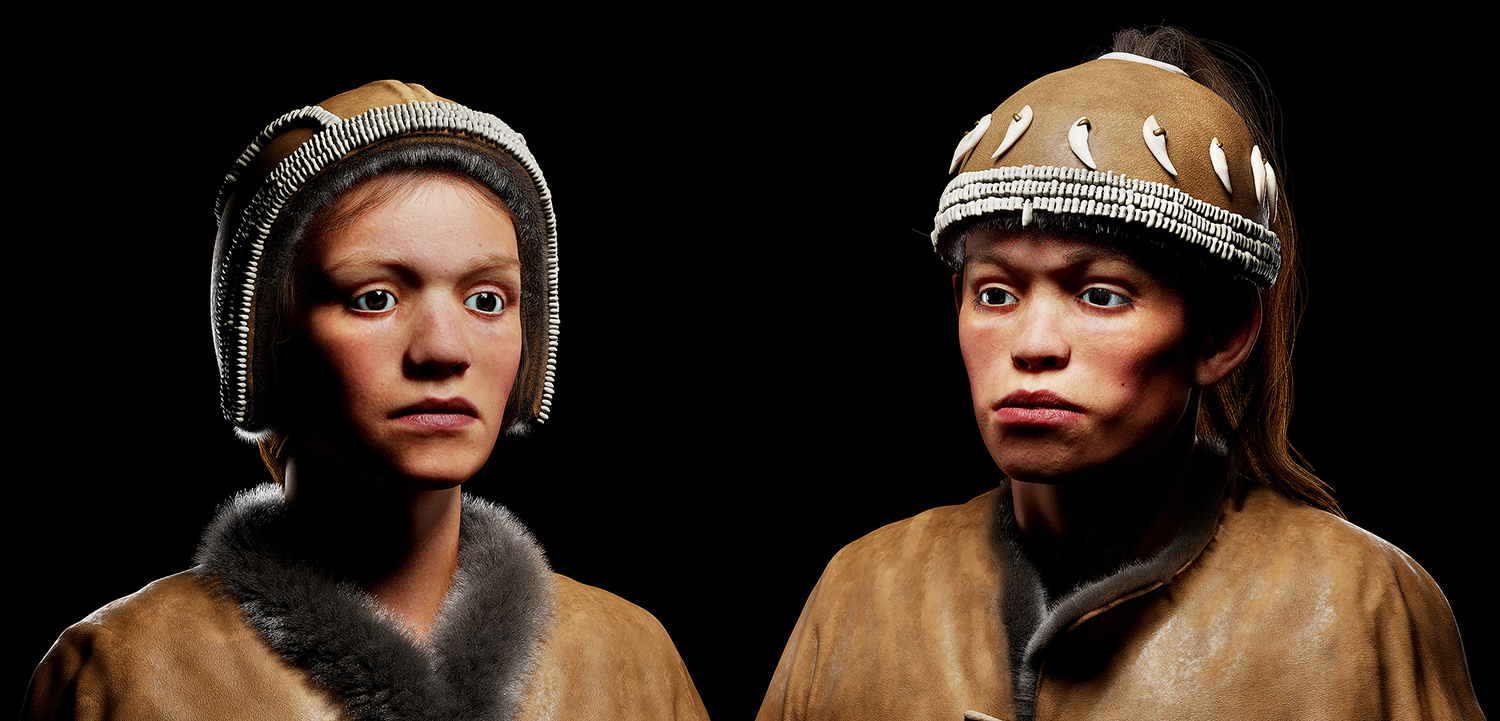Stare Into the Vacant Eyes of Some Tweens Who Lived 30,000 Years Ago
Credit to Author: Becky Ferreira| Date: Fri, 06 Oct 2017 08:00:00 +0000
Some 30,000 years ago, in the Vladimir region of western Russia, a girl and a boy, possibly siblings, died at the tender ages of approximately 10 and 13. They were buried side-by-side, their bodies decorated with red ochre. Their shared grave was filled with funeral gifts from their tribe, the Sungir people, who are among the earliest modern humans to have settled in Europe, and may be the ancestors of northern and eastern European people today.
Now, these mysterious adolescents have been virtually brought back to life in a collaboration between the studio Visual Science, the Russian Academy of Sciences’ Institute of Ethnology and Anthropology, and the Nauka 0+ Science Festival. By laser-scanning the pair’s skulls, and modeling them in 3D, the interdisciplinary team was able to produce uncanny visualizations of their faces.
Turns out these Sungir kids were pretty adorable, if a little dazed.

The exquisitely preserved remains of the boy (called “Sungir 2”) and girl (“Sungir 3”), excavated during the 1960s, make them particularly well-suited for accurate visual representations. (Sungir 1 is the skeleton of a middle-aged male, in case you’re wondering.)
For a more immersive experience, watch this VR video of the reconstruction, which caps off with the boy and girl eerily opening their eyes to the viewer.

Though clothing rots away over the centuries, the visualization team lucked out in this case because the Sungir duo wore garments bedazzled with thousands of beads made from mammoth tusks.
Read More: These Bronze Age Humans Were History’s Biggest Weed Dealers
The positioning of the beads was like a roadmap for reconstructing how the outfits were made, while the wealth of archeological discoveries at the Sungir site contextualized some of the other details. Based on the 80,000-odd cultural and household artifacts that have been recovered from this ancient hunting camp, these people produced zoomorphic figurines, engravings, and jewelry, and wore clothes made of rawhide and Arctic fox fur, sewed together with animal veins as threads.
This is just the latest project from Visual Science, which has also produced high-definition 3D visualizations of the Zika virus and augmented reality illustrations of atoms. By working with Sungir experts, the studio hoped to humanize these bygone cultures and inspire public interest in their lives by reanimating their faces in VR for the first time.
“The Sungir site is a global treasure,” Ivan Konstantinov, CEO of Visual Science, said in a statement. “Special clothing and decorative elements suggest an amazingly high level of cultural development among Homo sapiens living 30,000 years ago. By visualizing these details with scientific rigor, we’re able to share Sungir with the widest possible audience.”
Get six of our favorite Motherboard stories every day by signing up for our newsletter.